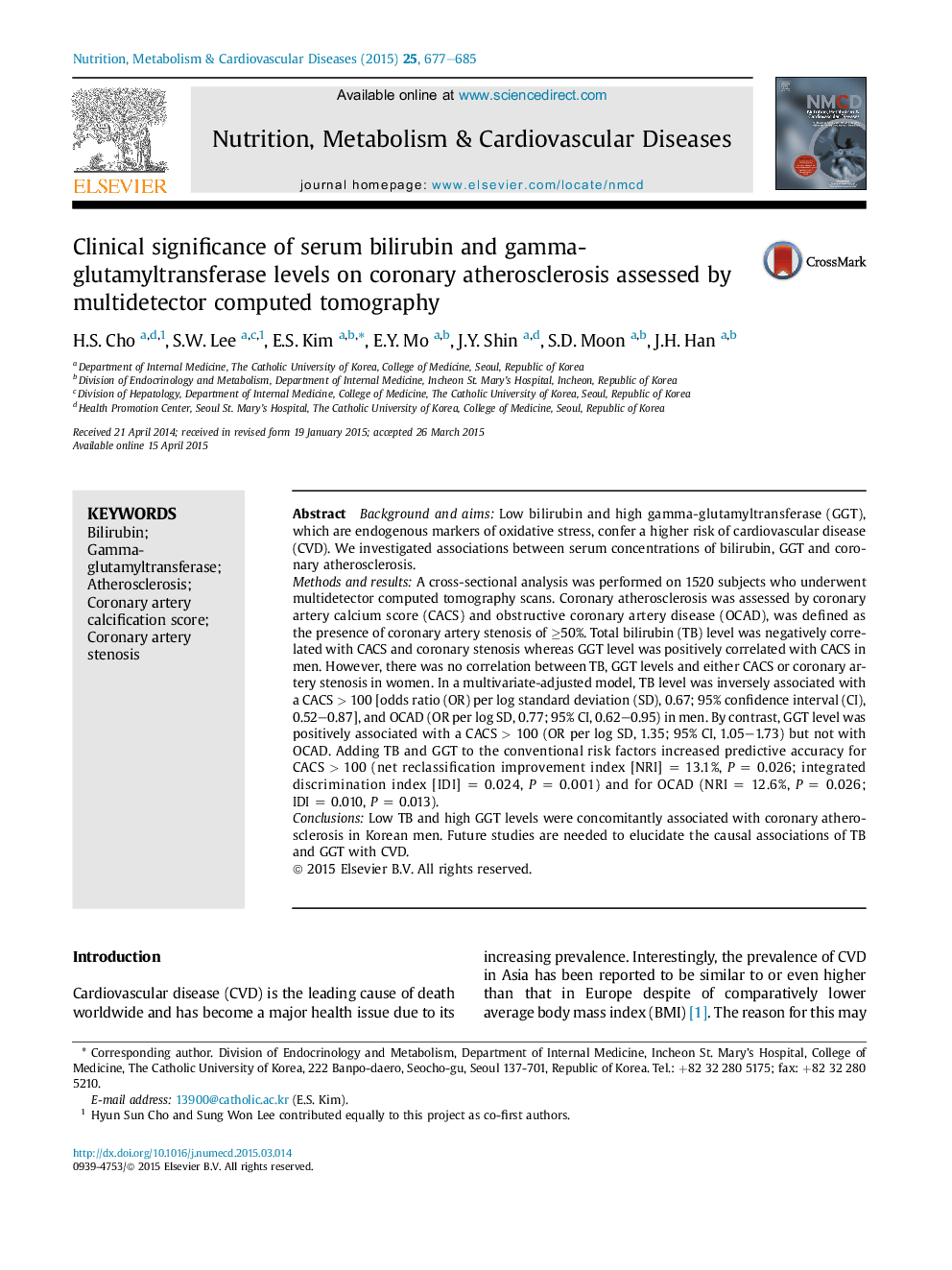| Article ID | Journal | Published Year | Pages | File Type |
|---|---|---|---|---|
| 5996401 | Nutrition, Metabolism and Cardiovascular Diseases | 2015 | 9 Pages |
Background and aimsLow bilirubin and high gamma-glutamyltransferase (GGT), which are endogenous markers of oxidative stress, confer a higher risk of cardiovascular disease (CVD). We investigated associations between serum concentrations of bilirubin, GGT and coronary atherosclerosis.Methods and resultsA cross-sectional analysis was performed on 1520 subjects who underwent multidetector computed tomography scans. Coronary atherosclerosis was assessed by coronary artery calcium score (CACS) and obstructive coronary artery disease (OCAD), was defined as the presence of coronary artery stenosis of â¥50%. Total bilirubin (TB) level was negatively correlated with CACS and coronary stenosis whereas GGT level was positively correlated with CACS in men. However, there was no correlation between TB, GGT levels and either CACS or coronary artery stenosis in women. In a multivariate-adjusted model, TB level was inversely associated with a CACS > 100 [odds ratio (OR) per log standard deviation (SD), 0.67; 95% confidence interval (CI), 0.52-0.87], and OCAD (OR per log SD, 0.77; 95% CI, 0.62-0.95) in men. By contrast, GGT level was positively associated with a CACS > 100 (OR per log SD, 1.35; 95% CI, 1.05-1.73) but not with OCAD. Adding TB and GGT to the conventional risk factors increased predictive accuracy for CACS > 100 (net reclassification improvement index [NRI] = 13.1%, P = 0.026; integrated discrimination index [IDI] = 0.024, P = 0.001) and for OCAD (NRI = 12.6%, P = 0.026; IDI = 0.010, P = 0.013).ConclusionsLow TB and high GGT levels were concomitantly associated with coronary atherosclerosis in Korean men. Future studies are needed to elucidate the causal associations of TB and GGT with CVD.
